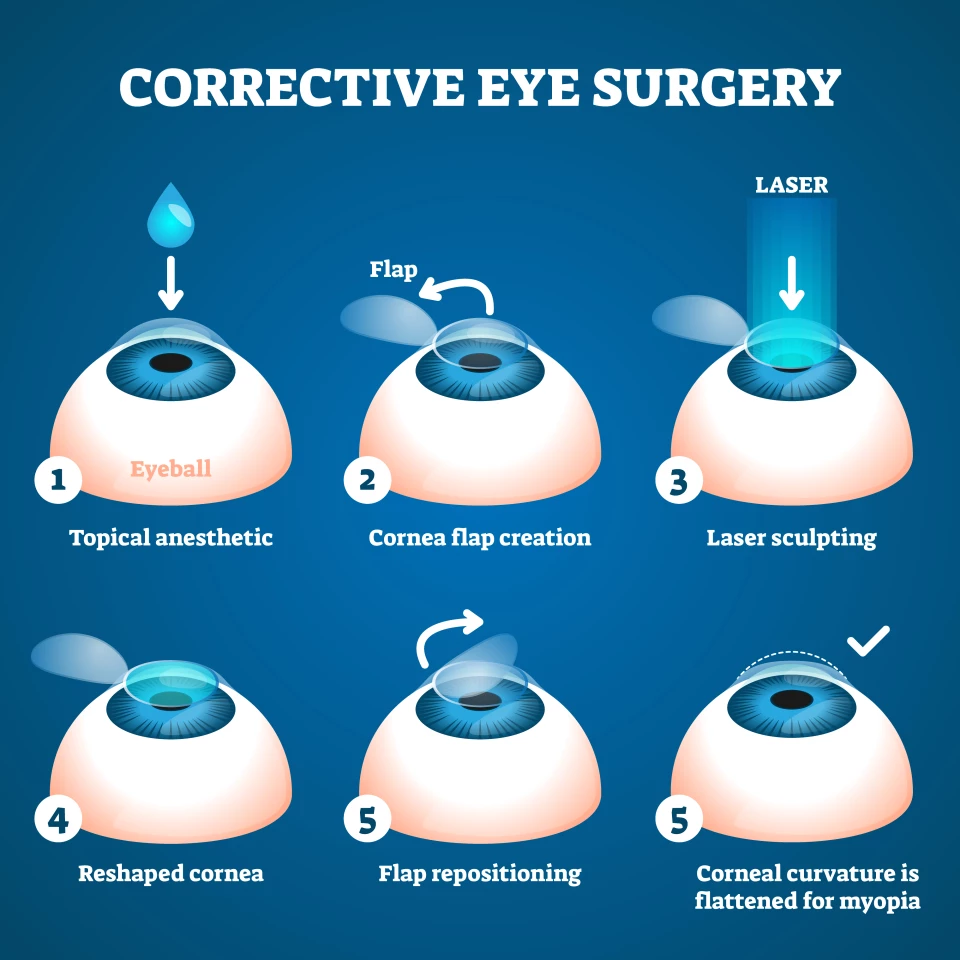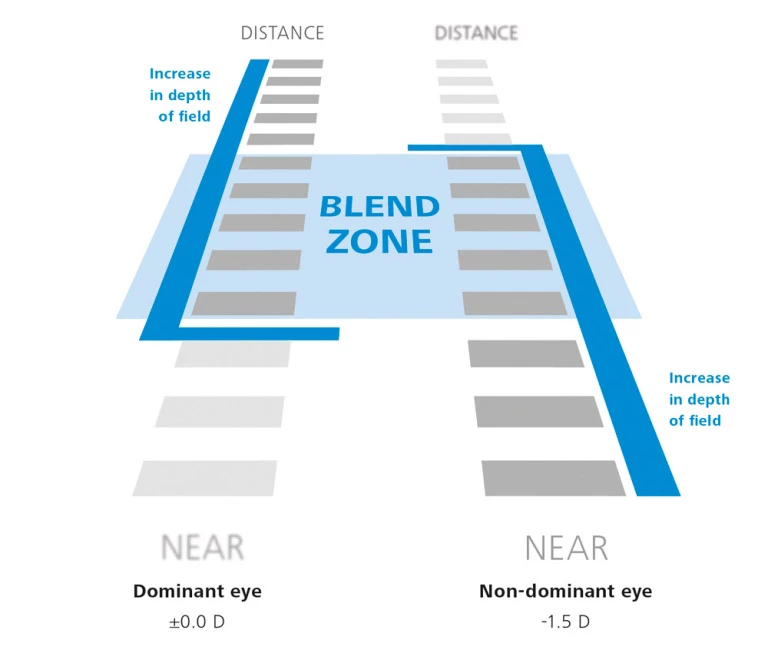All I wanted to do was get rid of my glasses, but when my local laser eye surgery clinic recommended some odd-sounding advanced Presbyond treatment developed by Zeiss, I said sure, if that's what the cool kids are getting. Here's what's happened.
I'm sharing my experience for a few reasons: firstly, I'm a big experience sharer from way back, it's kinda what I do. Secondly, while Presbyond appears to have been around since as least as far back as 2013, I'd never heard of it. And thirdly, I went looking for reviews that weren't posted on the same websites that were trying to sell it to me, and didn't find many. You're welcome.
So what is it, and how's it different from Lasik?
Laser eye surgery is designed to reshape your corneas. They're the bumps on the front of your otherwise pretty spherical eyeballs, and they play a key role in determining where the light coming in through your iris and lens finds its focal point. If your cornea's a bit too flat, the light focuses behind your retina, and boom, you're long-sighted. If your cornea has too much of a bump, the image focuses before it gets to your retina, and you're short-sighted.
Laser eye surgery uses largely automated machinery to cut little flaps in the outer skin of your eyeball, and then performs a laser ablation treatment on the tissue of the cornea, blasting tiny bits of it away to create a new shape, precisely tailored to perfectly correct your vision.

Presbyond takes things a step further.
As we age, the lenses in our eyes gradually become harder to squish into different shapes. As a result, it starts becoming more and more of an effort to read, even if your distance vision is perfect. My grandad used to hold books well down below his waist and tell me he was reading with his balls, but he was funny like that.
If you're a glasses wearer, you might choose to have two sets of glasses at this point; distance and reading glasses. Or you might go for a bifocal or multifocal set of glasses that correct your vision in different ways depending on where you're looking. If you get your eyes laser-corrected for distance vision, you'll probably need reading glasses again at some point.
Presbyond uses regular laser eye surgery machinery and techniques, but it's designed to correct your eyes to two different focal lengths. Your dominant eye is corrected to be great, but not perfect, for distance, and your non-dominant eye is corrected to be great, but not perfect, for reading. These not-quite-perfections are designed to give you a fairly broad intermediate area where both eyes can deliver detail. Zeiss calls this the "blend zone."

Your brain, the specialist told me, just figures it out, and you end up with excellent all-round vision that'll have you reading restaurant menus in your 90s and seeing just fine at a distance as well. If you don't like it, they told me, you can get it fixed back to double distance vision for free. It sounded weird and interesting, so I went for it.
The surgery was over and done with in less than 10 minutes I'd guess. Skip ahead if you don't want gory details, but I found it fascinating. If you want extra gory details, there are plenty of videos on YouTube showing the entire process, live and close up.
One eye at a time is held open, Clockwork Orange-style, and you lie down under the first machine, which is lowered down snug. You're told to look into a light and hold your eye still for about 7-8 seconds. If you can't, it doesn't matter; the machine is tracking your eye and adjusting its aim a thousand times a second, and will shut down if you freak out and look too far away.
I felt something as it cut the flaps into my eyes, but it wasn't painful. Friends told me to expect the smell of chicken, but sadly that did not eventuate. Then the surgeon ever-so-gently folded those flaps back, and the world went very blurry.
At this point it's off to the laser ablation machine and the most unpleasant part of this whole affair. Again, your job is to fixate on a point, but this time you can't see clearly because there's no front on your eyeball, and it's hard to stay locked on, because there's a disco array of red points all round your visual field, and they're very bright. This time it takes closer to 30 seconds each side, and apart from the discomforting glare there's really not much to feel.
Once that's done, the surgeon smooths the flap back down over your eyeball, with the delicate touch of somebody trying to put a screen protector on a new phone without any bubbles. You know when he's got it, because at that instant the world snaps into sharp focus.
That's it, you're in and out shockingly quickly, and then off into a darkened room to get some eye drops and dorky sunnies. The small text on my phone looked absolutely crystal clear pretty much immediately, but distance was more confusing. Don't plan too much for the rest of that first day, the next few hours you're going to want to be in bed, because your eyes really don't want to be open.

By the next morning, my eyes felt a little extra sensitive to light, but the sunnies took care of that, and the post-surgical ache and dryness went away over the following days. By that afternoon, I was comfortable enough to drive. Within a week, I became highly proficient at doing eye drops.
Vision-wise, my reading capability is extraordinary to me. At my day 1 checkup, I could read 4-point text on a card without straining, and I could've done smaller but they didn't have anything smaller. Closing my reading eye, I'm now testing three lines better than 20/20 on an eye chart with my distance eye.
As for the real world, I'm coming up on two weeks after surgery. My eyes are still on the dry side, so I'm using eye drops, and things aren't 100% there yet in my distance vision. Number plates on cars still look too blurry to read beyond about 30 meters (100 ft) away. My computer screen, which is in the "blend zone," takes a minute to adjust to each day, and it doesn't look perfectly sharp and clear, but it's still very readable at most distances.
The adjustments between different lighting conditions, and going from looking at close things to far ones, are taking a minute; things look blurry for a bit, and then they just don't any more. It's not really a conscious process. And at nighttime, bright lights like streetlamps and oncoming headlights are looking extra glary, with some haloing around them.
All this, says the specialist, is fully expected as the brain learns to adjust, and it puts me right about on track. Indeed, the transitions between different environments are getting quicker and more natural by the day.
But while things do sometimes look a bit glary, or temporarily blurry, the whole world has looked a ton sharper than it did before, since the moment those flaps went back on my eyeballs. Things may not be perfect yet, and there were definitely moments when my vision through glasses was sharper – but that'd only be the moments immediately after I cleaned the damn things, and before they got smudged up, sweated on, hugged against my face or fingered. This is already a huge improvement.
And there are other things; glasses restrict your peripheral vision. That tunnel vision is gone, along with the tenderness around my ears and nose bridge when I finally took the glasses off at night. Weirdly, I feel sure I can see colors more brightly and vividly; that's beautiful. Watching TV is almost overwhelming, like a massive sugar hit of color and light. I get why the kids are so obsessed with that stupid box now.
In summary, I've had no complications as yet. The surgery was over extremely quickly, with discomfort but no pain. The recovery was painful, but short. The two-different-focal-points approach seems to be working, with an associated bump in quality of life and general happiness about things.
At this stage, I'd say I recommend it if you're a suitable candidate. But I'd also say this: Presbyond cost me AU$6,500 (US$4,350) here in Australia. I'm not going to shout out the clinic that did the work here – it's been terrific, I have no complaints, but now having been through the process, it strikes me that most of the tricky work is done by automated machines.
The same kind of procedure can be done much, much cheaper overseas, presumably using the same machines, and presumably by people that are also well-trained and experienced at this stuff. I could've flown to one of several South-East Asian countries, had the surgery, spent a week wandering around some resort in thick sunglasses, and flown home again, and come out a couple of grand richer, with some weak approximation of a tan and far more coconut in my system.
Obviously, that's not an option everyone would be comfortable taking, and certainly, sometimes there'll be complications that might make you much more comfortable being closer to home – but I've thrown myself at the mercy of strangers many times and not been punished for it yet.
If y'all are interested in an update a month or two down the track, let me know in the comments and I'll... Probably forget, but you're definitely in with a better chance of a follow-up!
Source: Presbyond







